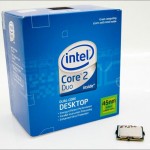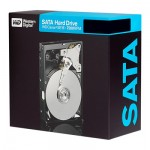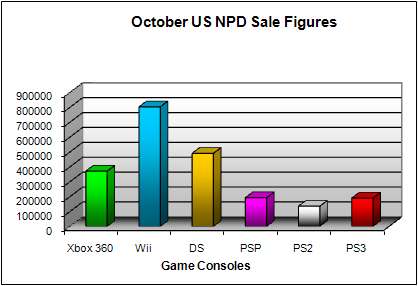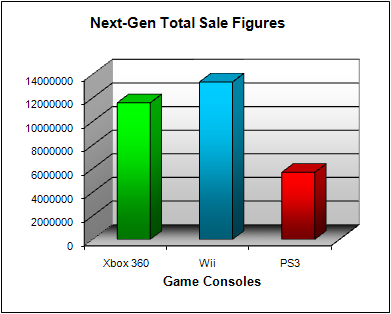My Fallout 3 addiction continues this week, and throw in the Thanksgiving holidays, and you have a pretty quiet week. I wrote a mid-week blog about my new PC, which ties in well with my If I were to buy a new computer today feature. I didn’t really follow my own advice there, did I, but then again this is a work computer I’m buying, even though it plays Fallout 3 at 1360×768 with 4xAA in high quality mode. Yep, it’s a work computer alright.
In the same feature, I also wrote some Fallout 3 troubleshooting tips. As great a game as it is, the stability sucks and there are a whole bunch of bugs. If you got the game on the PC, really the best platform to play the game on, then you’ll in luck as there are many ways around the bugs through the console interface (for example, bringing back dead NPCs that aren’t supposed to be dead). If you own it on the console, then you’re out of luck I’m afraid. One thing I did forget to mention in the feature is that you shouldn’t complete the main storyline quests until you’ve done all the other stuff, as once the main story is complete, the game ends and you can’t continue on playing. I’m done about 8 quests already, but only the first storyline quest, and that’s only because the game’s pretty pointless if you don’t get out of the damn vault. But even with all these problems, it’s still a great game. I even love the game’s soundtrack: “I’m as horny as Kansas in august” (I know, I know).
Anyway, onto the news that I managed to find in between the 4 hour long Fallout 3 gaming sessions.
 In copyright news, France’s “3 strikes” copyright infringement law has been struck down by the EU, which is good news for everyone in Europe. It’s good that there’s a legal body such as the EU to provide oversight over “too eager to please the MPAA” countries and their ridiculous copyright legislation.
In copyright news, France’s “3 strikes” copyright infringement law has been struck down by the EU, which is good news for everyone in Europe. It’s good that there’s a legal body such as the EU to provide oversight over “too eager to please the MPAA” countries and their ridiculous copyright legislation.
The movie industry’s lawsuit against Australian ISP iiNet’s has been publicly condemned, and here’s another write-up of the potential consequences. Holding ISPs responsible for their customer’s possible actions is like holding the Yellow Pages responsible for the acts of every company that it lists. I just hope all of iiNet’s rival ISPs are banding together and contributing to iiNet’s legal costs, because a loss for them is a loss for every ISP in Australia. There’s already a lot of public outcry over the government’s ridiculous Internet filtering scheme, which fortunately looks like it won’t be voted in. Even though I voted for this current government, you just cannot support something as ridiculous as a National Filtering Scheme (read “government censorship”). The future of Australia’s Internet is now very much on the line, pun unintended.
Apple’s latest MacBooks now support DisplayPort, DVI’s successor in PC display connections. Unfortunately, DisplayPort also comes with HDCP DRM, and that has the Apple users up in arms. HDCP has been in DVI for a long time now, and it is already mandatory on HDMI. DisplayPort, being backwards compatible with HDMI and DVI, was always going to feature HDCP. iTunes content will now no longer play on non HDCP displays, and this is the source of the biggest complaint, but Blu-ray/HD DVD has been like this from day one. All HDMI capable displays are HDCP compatible, as are monitors with DVI input made anytime in the last year or two, so only older displays are affected. There are devices you can use to get around this though, I think. HDCP is a load of crock, I mean how many people actually strip the digital signal from DVI or HDMI to copy movies? Maybe professional pirates, but they also have easier methods to strip DRM. But the industry in general has moved on, and only Apple was behind when it came to the adoption of HDCP, so it’s now too late to do anything about it. On the subject of DisplayPort, it is a logical step up from DVI, since it supports audio as well, and unlike HDMI, it supports it two ways (web cams/mics built into monitors can now be connected through the monitor’s cable, for example). Plus, DVI bandwidth is beginning to be a problem, so DisplayPort will become necessary soon. Plus, it’s an open standard, so at least there’s some good news in this area.
Staying on the computing theme, the PC version of GTA IV is coming out soon and it uses SecuROM DRM like most of the recent games, including the infamous Spore. That’s not much of a news, except that Rockstar Games, the makers of GTA, had to come out and explain why they use DRM and how it isn’t as restrictive as the full set of SecuROM features allow (ie. it hasn’t been “Spored”). I like this, not the DRM part, but the fact that publishers now see the need to justify their use of DRM, when in the past, nobody talked about it (even though customers always complained). This reminds me of the early days of music DRM, and if gamers take the path of music lovers and demand DRM-free, they will get it. At the very least, any game that requires Internet authentication should now play without the original disc – I mean, why do you need two levels of authentication, when one’s enough. Authenticate the serial so that it can be used on an unlimited number of computers but never at the same time (with a few authentication free sessions after each authentication, so you can play without an Internet connection, but only for a few times before you need to re-authenticate), and that should kill off casual piracy that consists of your friends borrowing your game CDs to install on their computers. After all, that’s what the DRM is there for isn’t it? DRM-free is even better, but that relies on publisher making good content that people want to buy, and that’s just too much to ask isn’t it? But I do feel that people who buy games won’t pirate, and vice versa, so no money is actually lost anyway.
 Let’s dig into Blu-ray news, Home Media Magazine has published in it’s latest digital edition of the magazine figures for year to date Blu-ray (and DVD) sales. Blu-ray held 6.11% of the market based on dollar volume (but as Blu-ray is more expensive than DVDs, the actual disc volume will be less than this – counting only the top 20 titles by disc volume, Blu-ray only held 4% of the market). That’s not too bad I suppose, because this time last year, Blu-ray only had 2 or 3% (with HD DVD holding a further 1 to 2%), so Blu-ray has absorbed HD DVD owners, plus increased uptake a bit. Hit titles such as Iron Man (number one selling Blu-ray title of the year, but soon to be displayed by The Dark Knight) held as much as 17% of the market, although less stellar titles often fall towards 5%. It’s the 5% that Blu-ray needs to improve on, because 17% is pretty good at this point in Blu-ray’s development.
Let’s dig into Blu-ray news, Home Media Magazine has published in it’s latest digital edition of the magazine figures for year to date Blu-ray (and DVD) sales. Blu-ray held 6.11% of the market based on dollar volume (but as Blu-ray is more expensive than DVDs, the actual disc volume will be less than this – counting only the top 20 titles by disc volume, Blu-ray only held 4% of the market). That’s not too bad I suppose, because this time last year, Blu-ray only had 2 or 3% (with HD DVD holding a further 1 to 2%), so Blu-ray has absorbed HD DVD owners, plus increased uptake a bit. Hit titles such as Iron Man (number one selling Blu-ray title of the year, but soon to be displayed by The Dark Knight) held as much as 17% of the market, although less stellar titles often fall towards 5%. It’s the 5% that Blu-ray needs to improve on, because 17% is pretty good at this point in Blu-ray’s development.
But a survey of shoppers suggest that this holiday period won’t really be a key one for Blu-ray, as consumers say they are not planning a Blu-ray Christmas. Amazon’s Black Friday sales has started but it’s all a bit underwhelming (although I picked up Iron Man, Kung Fu Panda and Indy 4 on Blu-ray for $14.99 each in their early bird special, which wasn’t all that early for us Australians as it was 9pm here when it started). There are some cheap titles in there, many under $11, but you really do expect a bit more. The early bird specials were okay, but that’s only like 6 titles, and only 4 of them are new releases. More sales like that, then we’re talking.
But you can’t help but feel that some of the Blu-ray backers are now thinking that Blu-ray alone won’t help their fortunes. Panasonic, on the the main backers, is now talking up 3D technology and want to add it to the Blu-ray specs. If HD can’t do it, if BD can’t do it, then let’s go 3D. Blockbusters, another company that backed Blu-ray early when it went Blu-ray exclusive months before any other company, is now launching their Blu-ray killing next-gen video streaming service. Not really though, because SD video streaming and HD Blu-ray are not really competitors, other than in the general sense that one service takes away money that people can spend on the other. Video streaming may kill off DVD, but until Blu-ray quality video streaming becomes a reality, Blu-ray will have a place in the market. From a technical standpoint, all you need is a non theoretical speed of 50 Mbps to be able to stream Blu-ray content, and BD-J can already accommodate streamed Blu-ray movies from what I’ve read. 50 Mbps is still out of reach for most people these days (if you’re already downloading stuff at 6.5 MB/s, then you’re good to go, but I can barely do 650 KB/s at the moment), and even more so when everyone will be streaming stuff at the same time. Of course, this is assuming the the Blu-ray movie is at the maximum specified bitrate (basically max out video and audio bitrates), which most movies do not reach. Plus, it also assumes realtime streaming, and not a partial download/streaming service (say 2 hours of wait before you can start watching – that’s stil quicker than buying Blu-ray discs online, or even going to the shops sometimes). Plus, video codec improvements will mean reduced bitrate, but still the same excellent quality. But anyway, the first step will be to get people used to having streaming movie set-top boxes, and Blockbuster, Netflix, Microsoft, and even Sony have already made moves in this direction.
![]() And finally in gaming news, a new PS3 firmware should now be available by the time you read this. I like Sony’s commitment to providing regular firmware updates, but the problem is that these firmware do not get the testing time they require, and that’s why almost every single firmware release has been buggy, not helped by there being so many PS3 SKUs. Overall, I still prefer Microsoft’s bi-annual major updates (with lots of small silent updates in between).
And finally in gaming news, a new PS3 firmware should now be available by the time you read this. I like Sony’s commitment to providing regular firmware updates, but the problem is that these firmware do not get the testing time they require, and that’s why almost every single firmware release has been buggy, not helped by there being so many PS3 SKUs. Overall, I still prefer Microsoft’s bi-annual major updates (with lots of small silent updates in between).
In other gaming news, Fallout 3 is awesome. That is all.
Speaking of an awesome game, I’m off to play one now and hope I don’t set the world on fire. See you next week.




















